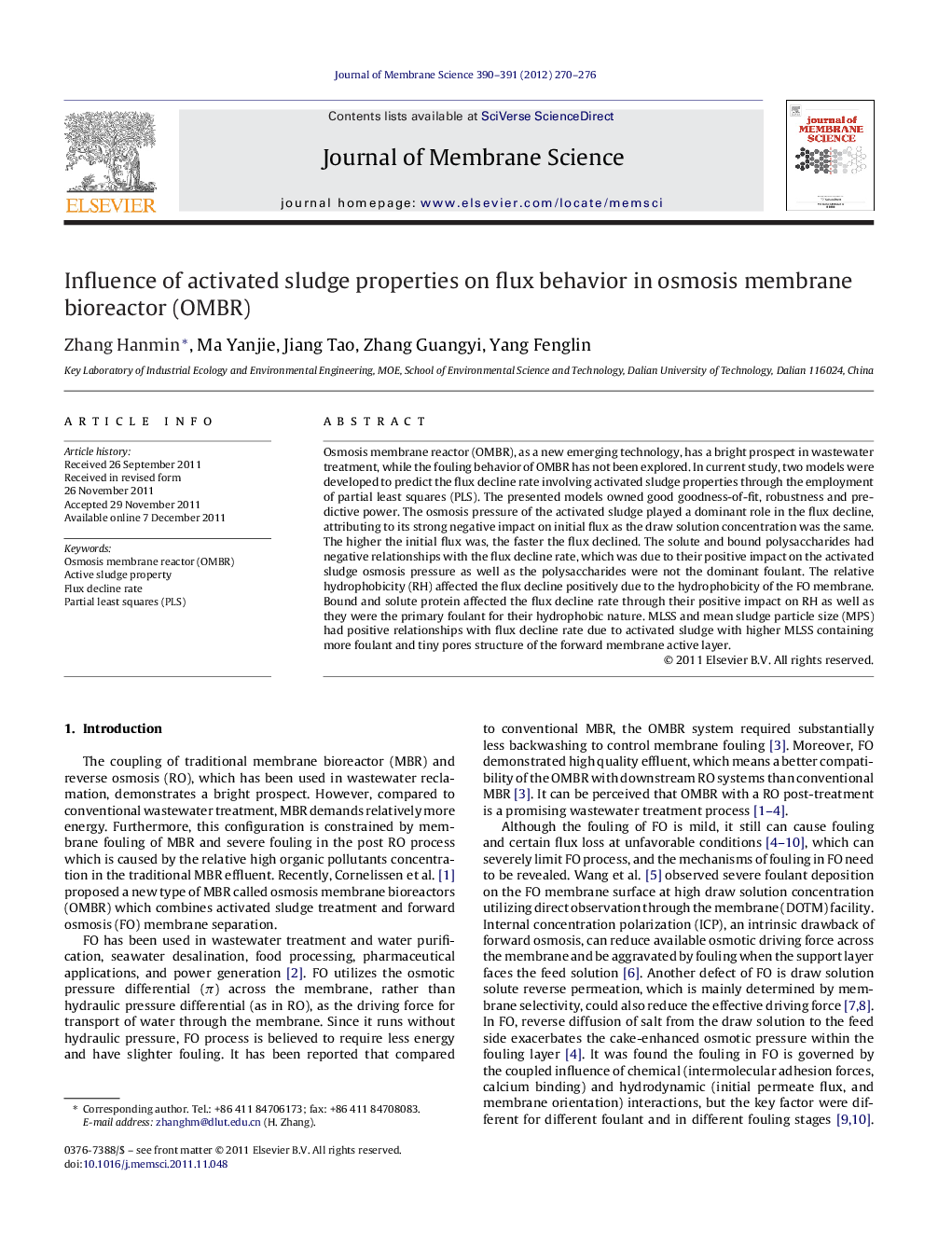| Article ID | Journal | Published Year | Pages | File Type |
|---|---|---|---|---|
| 635129 | Journal of Membrane Science | 2012 | 7 Pages |
Osmosis membrane reactor (OMBR), as a new emerging technology, has a bright prospect in wastewater treatment, while the fouling behavior of OMBR has not been explored. In current study, two models were developed to predict the flux decline rate involving activated sludge properties through the employment of partial least squares (PLS). The presented models owned good goodness-of-fit, robustness and predictive power. The osmosis pressure of the activated sludge played a dominant role in the flux decline, attributing to its strong negative impact on initial flux as the draw solution concentration was the same. The higher the initial flux was, the faster the flux declined. The solute and bound polysaccharides had negative relationships with the flux decline rate, which was due to their positive impact on the activated sludge osmosis pressure as well as the polysaccharides were not the dominant foulant. The relative hydrophobicity (RH) affected the flux decline positively due to the hydrophobicity of the FO membrane. Bound and solute protein affected the flux decline rate through their positive impact on RH as well as they were the primary foulant for their hydrophobic nature. MLSS and mean sludge particle size (MPS) had positive relationships with flux decline rate due to activated sludge with higher MLSS containing more foulant and tiny pores structure of the forward membrane active layer.
► It is feasible to employ PLS to predict the flux decline in the OMBR system. ► The osmosis pressure of activated sludge played a dominant role on flux decline. ► The solute and bound polysaccharides affected the flux decline rate negatively. ► RH had a great positive influence on flux decline. ► The bound and solute protein had positive influences on flux decline.
